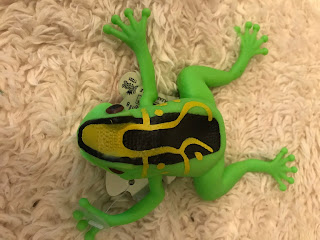Sensory Toys
By Trisha Roberts
Sensory Toys, as their name implies, stimulate the senses.
Young infants love toys with lights, music and sounds. Toys that
move, like mobiles and suspended toys, encourage ocular movement and improve
vision. Toys with textured surfaces and varied shapes teach children about the
world around them.
All toys are stimulating in one way or another, but Sensory
Toys as a category have come to refer to a set of toys that are more
therapeutic in nature. Children with Sensory Processing Disorders (SPD)
frequently need specific stimulation in order to calm themselves. Tactile Toys like our Squishy Nemo or Squishy
Stretchable Hulk can help a child de-stress when learning a new skill. (Remember using a Stress Ball?)
Occupational Therapists will often prescribe a “Sensory
Diet” for children with Autism or Pervasive Developmental Disorder (PDD) that
may include textured toys along with a variety of exercises and activities. ***See our 4-Part Blog Series on SensoryProcessing Disorder*** The use of tactile toys can be a positive, helpful support in the classroom, allowing children to attend and focus on instructions and learning.
Sensory toys can provide the particular sensory input that
many children with autism crave.
Some sensory toys are also
excellent fidget toys that can
improve focus, concentration, and attention to task in children with ADHD and
others who need to keep their
hands busy in order to listen and attend.
This week we feature our Sensory-Tactile Toy Packageconsisting of 7 different toys that your child with autism or ADHD may find
engaging and calming. These can be helpful for sensory cravers and those with sensory challenges.
Blog Administrator: Trisha Roberts
proeducationaltoys@gmail.com
Copyright © 2017 TNT Inspired Enterprise, LLC, All rights reserved.
Unauthorized duplication is a violation of applicable laws.










No comments:
Post a Comment